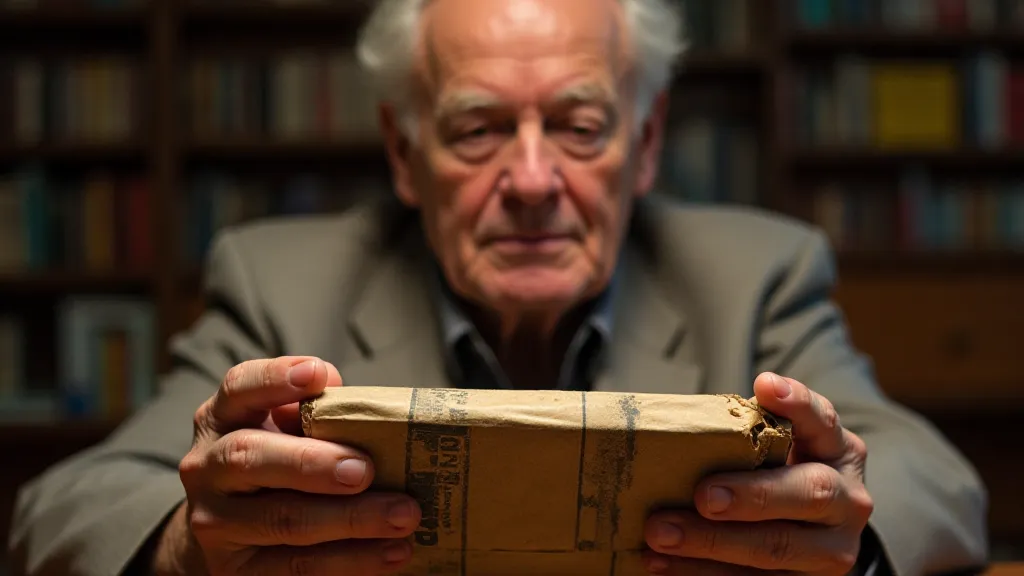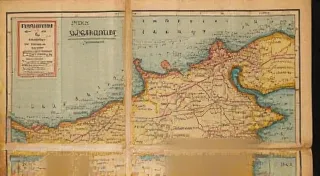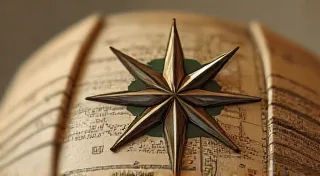The Silent Sentinels: Preserving the Legacy of Regional Board Game Manufacturers
We often celebrate the titans of the board game world – Parker Brothers, Milton Bradley, Hasbro. Their names are synonymous with childhood memories, family gatherings, and the thrill of competition. But nestled within the vast landscape of gaming history are countless smaller, regional manufacturers – the silent sentinels of a bygone era. These companies, often operating within a limited geographical area, produced games with a distinct charm, a testament to local creativity and craftsmanship that are increasingly sought after by collectors. This isn't just about acquiring pieces of cardboard; it's about rescuing echoes of a forgotten narrative.
My own fascination began with a simple game: “Homesteaders,” a farming simulation game from the Midwest Novelty Game Company of Iowa. I found it at a flea market, its box faded and its rules vaguely translated, but something about its earnest, almost quaint design captivated me. It wasn’t flashy, it wasn’t mass-marketed – it felt… personal. That initial discovery opened a doorway, leading me down a rabbit hole of local game manufacturers, each with a story to tell.
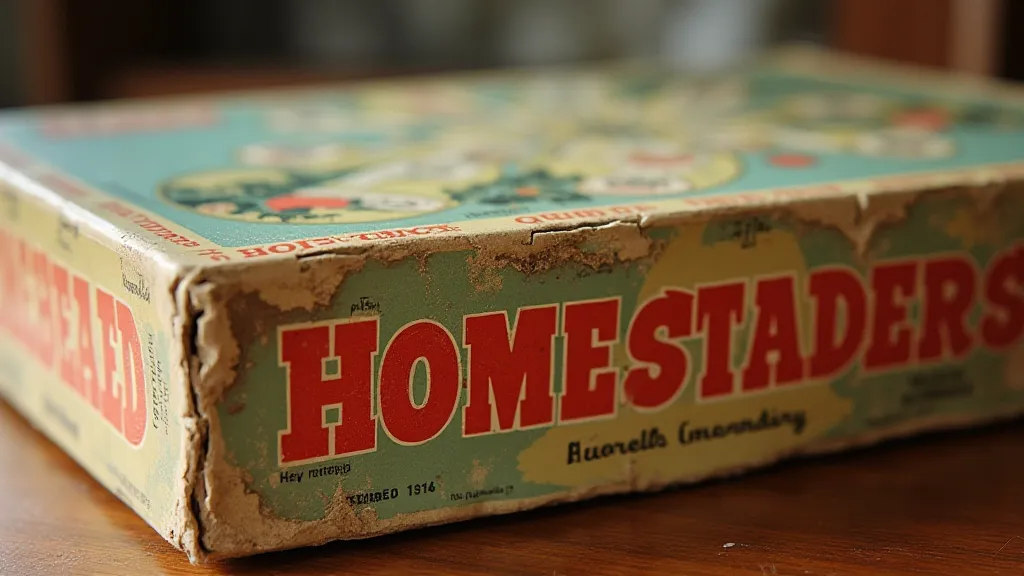
The Rise and Fall of Local Gaming: A Look Back at Forgotten Architects
The heyday of regional board game companies largely coincided with a period of robust local economies and a strong sense of community. Many were founded in the early to mid-20th century, catering to a clientele that valued games that reflected their local culture and interests. Think of companies like Lakeside Games in Minnesota, specializing in games centered on the Northwoods, or the F.A. Oechsler Company in Wisconsin, known for their children’s games and puzzles. These weren’t driven by vast marketing budgets or global distribution; they thrived on word-of-mouth and regional advertising. The stories behind these companies and their eventual decline are often fascinating – it's a truly humbling experience to consider those Forgotten Architects of Family Game Night.
The post-World War II era saw a shift. Mass production techniques became more sophisticated, and larger companies with wider distribution networks began to dominate the market. Regional manufacturers often lacked the resources to compete, leading to a gradual decline and eventual closure. Many simply disappeared, their existence fading from collective memory. However, a dedicated community of collectors now strives to keep these stories alive. The impact of this shift extended beyond just production; the very nature of leisure and recreation began to transform, shaping how families spent their time together. The shift also left behind some fascinating anomalies – games with unique quirks and errors – and those dedicated to seeking out these The Alchemist's Formula: Decoding Rare and Misprinted Board Game Variants find a unique thrill in the hunt.
Craftsmanship and Design: A Distinct Regional Aesthetic & The Ephemeral Nature of Tinplate
What sets these regional games apart isn’t just their scarcity; it’s the distinct aesthetic they embody. The artistry often reflects the skills and materials available locally. You'll find intricate wooden game pieces carved by hand, playing boards meticulously hand-painted, and box artwork reflecting the regional landscape and culture. Unlike the often-polished uniformity of larger manufacturers, regional games exhibit a quirky, sometimes rough-around-the-edges charm – a tangible connection to the people who created them. It’s a testament to a time when artistry and durability were valued over sheer volume. Many of these games utilized tinplate, a common material of the era, but the way it was worked – the imperfections, the hand-painted details – made each piece unique. Considering the fragility of tinplate and the passage of time, it’s remarkable how many examples have survived, but the Ephemeral Nature of Tinplate is a constant reminder of the importance of preservation.
Consider the games produced by the Wisconsin Wooden Toy Company. While some are fairly simple, their wooden tokens were often beautifully hand-painted, a level of detail rarely seen in mass-produced games. These weren’t just game pieces; they were miniature works of art, testament to the pride and skill of the artisans involved. The cultural significance of these games, and the role they played in family life, extended far beyond mere entertainment. The desire for connection and shared experience led to games designed to foster interaction and strengthen bonds - a far cry from the solitary pursuits that increasingly define modern leisure.
Rarity and Value: More Than Just Monetary Worth – A Weight of Inheritance
Naturally, scarcity plays a significant role in the value of these vintage board games. Games from defunct regional companies are often found in very limited quantities, making them highly desirable to collectors. Condition is, as always, paramount, but a game’s regional provenance often adds a premium. A slightly damaged copy of a common game from Parker Brothers may fetch a reasonable price, but a similar condition game from a now-defunct Iowa manufacturer can command significantly more. The stories these games tell – the connection they provide to a bygone era, a family's history – is immeasurable. Many collectors inherit these games from family members, carrying on a legacy and a piece of personal history. The Weight of Inheritance these collections represent is a powerful motivator for preservation.
However, the true value extends beyond the monetary. It’s the ability to connect with a piece of local history, to hold in your hands a tangible representation of a community’s creativity and spirit. It's about piecing together the fragmented narrative of a company’s rise and fall, understanding the cultural context that shaped its games. The games themselves were often more than just amusements; they were windows into a specific time and place, reflecting the values, beliefs, and social structures of the communities they served. The simple act of gathering around a board game was a cornerstone of family life, a shared ritual that strengthened bonds and created lasting memories. For many families, these games represented a tangible link to their heritage, a connection to the generations who came before.
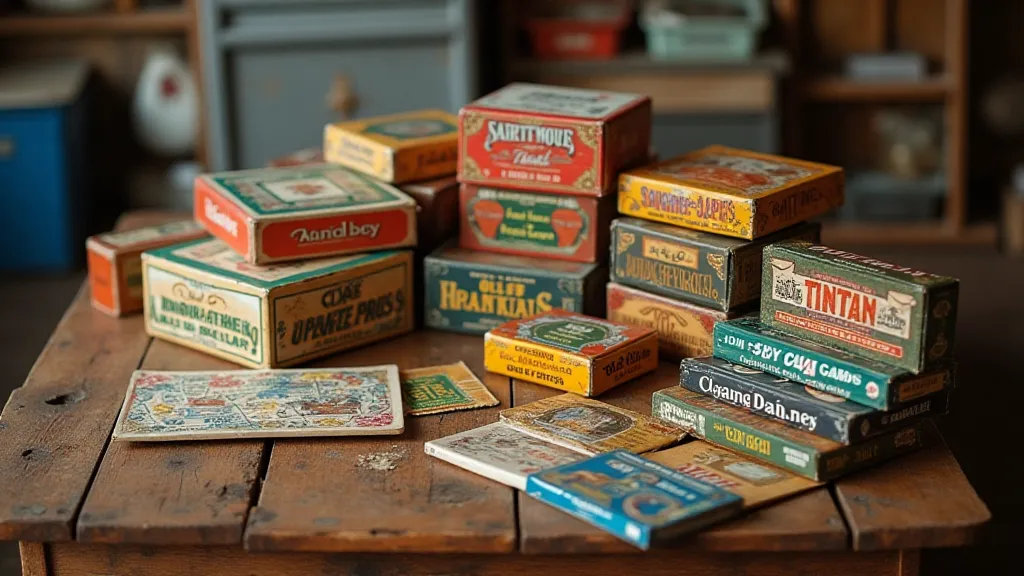
Preservation and Restoration: A Collector’s Responsibility & The Lexicon of Leisure
As stewards of these historical artifacts, collectors have a responsibility to preserve them for future generations. This doesn't necessarily involve elaborate restorations. Sometimes, simply protecting the game from further deterioration is enough. Storing games in a cool, dry environment, away from direct sunlight, can significantly extend their lifespan. The language surrounding these games—the terminology used in the rules, the descriptions on the boxes—offers a window into the era and how people engaged with leisure activities. It's like a Lexicon of Leisure, a snapshot of a particular time and place.
However, more involved restoration can be appropriate in certain cases. Replacing missing pieces, repairing damaged boxes, or gently cleaning soiled boards can all enhance the game's aesthetic appeal and historical integrity. It's crucial to approach restoration with a degree of caution, prioritizing authenticity over perfection. Overly aggressive cleaning or poorly executed repairs can actually diminish a game's value and historical significance. The role of games in the community wasn't just about entertainment; they were often intricately woven into social rituals and celebrations, reinforcing cultural norms and values. From elaborate holiday tournaments to casual family gatherings, games provided a shared experience that fostered a sense of belonging and connection.
The Future of Collecting Regional Board Games: A Growing Appreciation
The interest in collecting vintage regional board games is steadily growing. As people increasingly seek connections to their local heritage and appreciate the unique charm of handcrafted goods, these "silent sentinels" are gaining recognition. Online forums and collector’s groups provide platforms for sharing knowledge, trading games, and celebrating the stories behind these forgotten manufacturers. We're seeing a renewed interest not just in the games themselves, but in the narratives surrounding them, the people who made them, and the communities they served. The rise in popularity isn’t just about nostalgia; it's about a deeper appreciation for craftsmanship, authenticity, and the human connection that’s often missing in the digital age. The shared experience of playing a vintage board game, even if it’s just with a small group, provides a welcome respite from the isolation that can characterize modern life.
Perhaps the greatest reward in collecting these games isn't the acquisition of rare treasures, but the opportunity to contribute to a larger effort – to ensure that the legacy of these regional manufacturers is not forgotten. It’s a chance to connect with the past, to appreciate the creativity of a bygone era, and to preserve a tangible piece of our cultural heritage. These games are more than just cardboard and paper; they are echoes of a time when local communities thrived, and the simple pleasure of a board game brought families together. Their stories remain, waiting to be rediscovered and shared. The ability to recreate those moments – to relive a piece of family history – is what truly makes collecting these games so rewarding.
